National Hispanic Heritage Month
This month Michigan Memories is honoring National Hispanic Heritage Month. We've included some research questions to help teachers who might like to use them in their classrooms.
Painting a mural
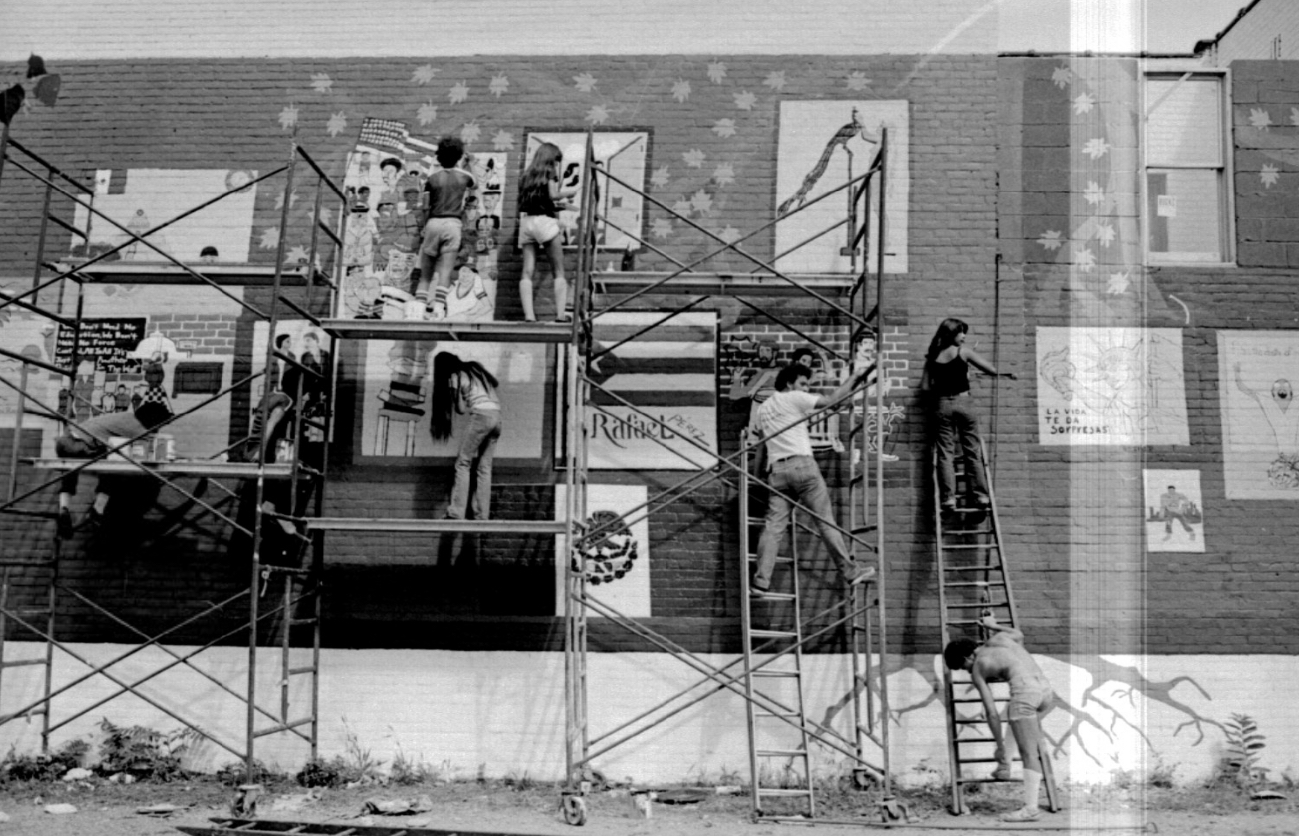
Possible research questions:
What is a mural, and how is a mural different from other kinds of art?
Why do you think the painters in this photograph decided to paint their murals on the side of a building?
"How old do the painters look to you? How do you think the painters' ages relate to the mural?"
Year: 1980
Source: The Detroit News Photograph Collection, The Virtual Motor City Collection at the Walter P. Reuther Library, Archives of Labor and Urban Affairs, Wayne State University: https://wayne.contentdm.oclc.org/digital/collection/vmc/id/32490/rec/1
Making tortillas
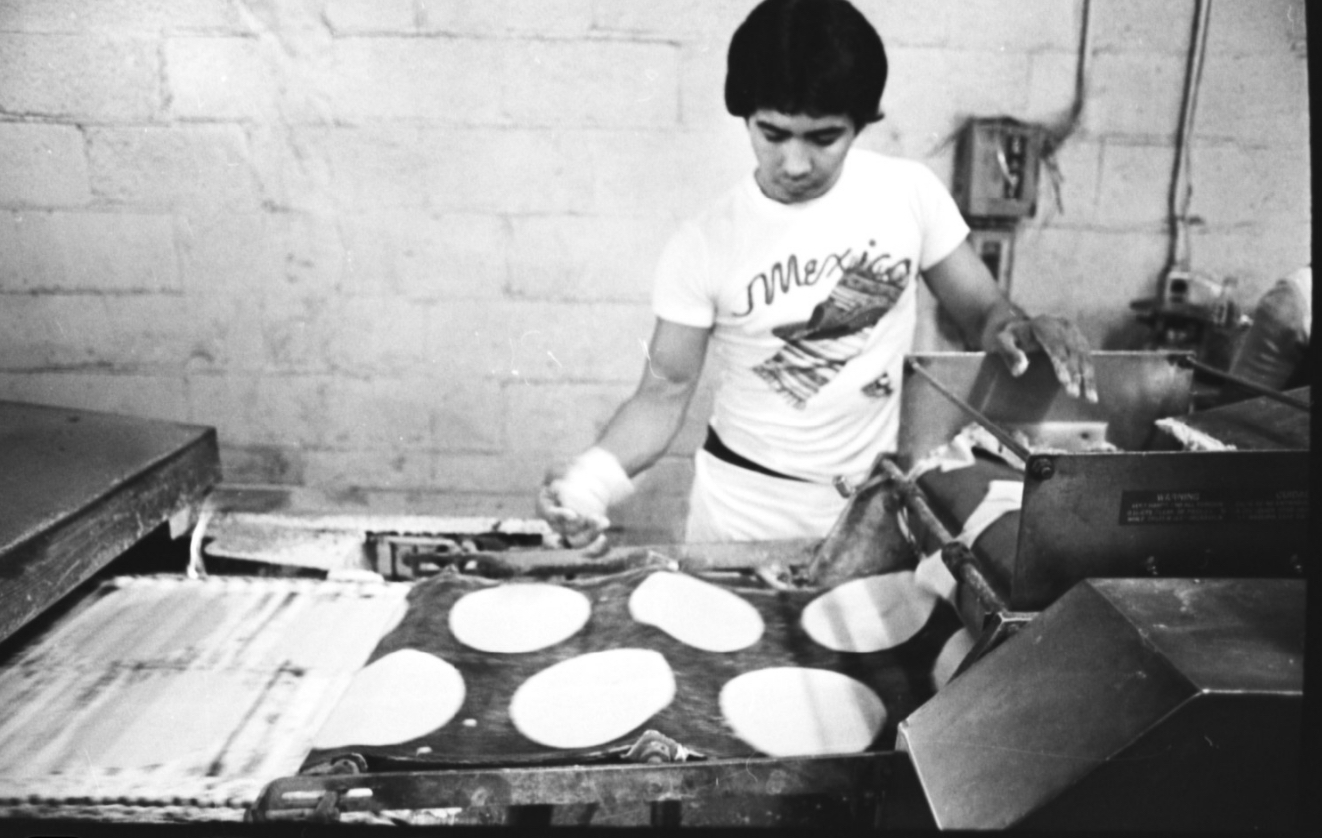
Possible research questions:
What are some of the reasons foods from one culture, like tortillas, are adopted by many other cultures?
What are some other examples of foods like these?
Year: Unknown
Source: The Detroit News Photograph Collection, The Virtual Motor City Collection at the Walter P. Reuther Library, Archives of Labor and Urban Affairs, Wayne State University: https://wayne.contentdm.oclc.org/digital/collection/vmc/id/36408/rec/9
Quinto Sol Latino Community Center in Lansing
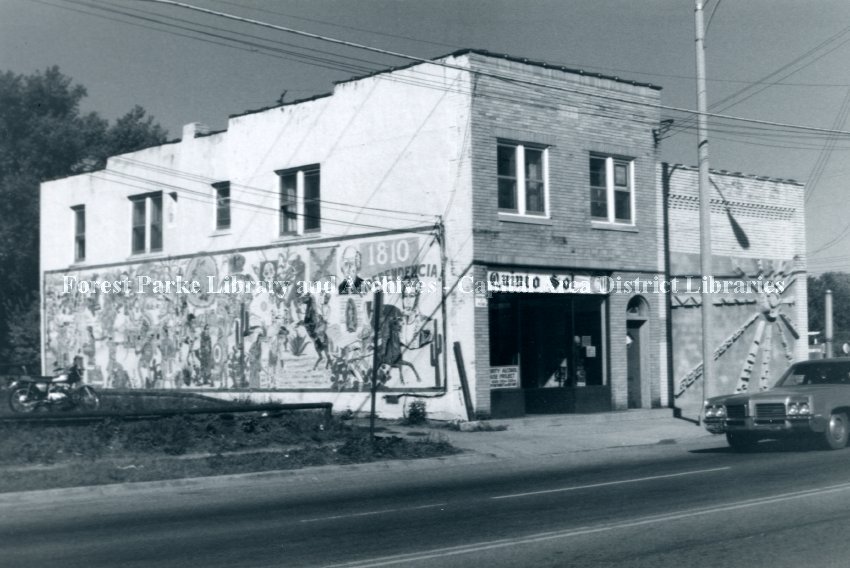
Possible research questions:
This community center was in a predominately Latinx part of Lansing, MI. Since the 1970s, when this photo was taken, the neighborhood has changed. The community center in the photo is not there anymore. What do you think is there now? How could you find out?
What does Quinto Sol mean?
What kinds of hints does this name or the building's decoration give you about the community center's goals?
Year: founded in 1970
Source: Local History Photograph Collection, Capital Area District Libraries: https://cadl.catalogaccess.com/archives/11563
Sketch by Diego Rivera in the Detroit Institute of Arts
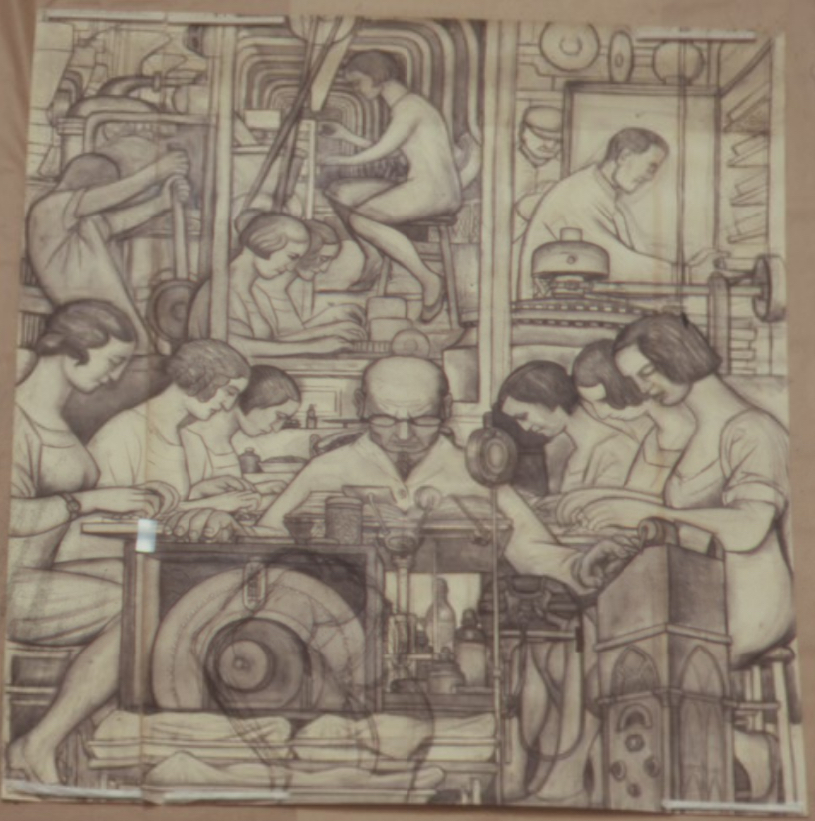
Possible research questions:
Who was Diego Rivera?
Why is Diego Rivera an especially important artist to the Detroit Institute of Arts?
This sketch was "lost" in the basement of the Detroit Institute of Arts for a while. Why might an artist make a sketch for a very large work of art?
Year: 1979
Source: The Detroit News Photograph Collection, The Virtual Motor City Collection at the Walter P. Reuther Library, Archives of Labor and Urban Affairs, Wayne State University: https://wayne.contentdm.oclc.org/digital/collection/vmc/id/16242/rec/31
Note: A Detroit Free Press article about this and other sketches can be found here: https://www.freep.com/story/entertainment/arts/2015/02/20/rivera-kahlo-detroit-industry-murals-dia/23710669/
Postcard of "Mexican Pueblo," by José Clemente Orozco
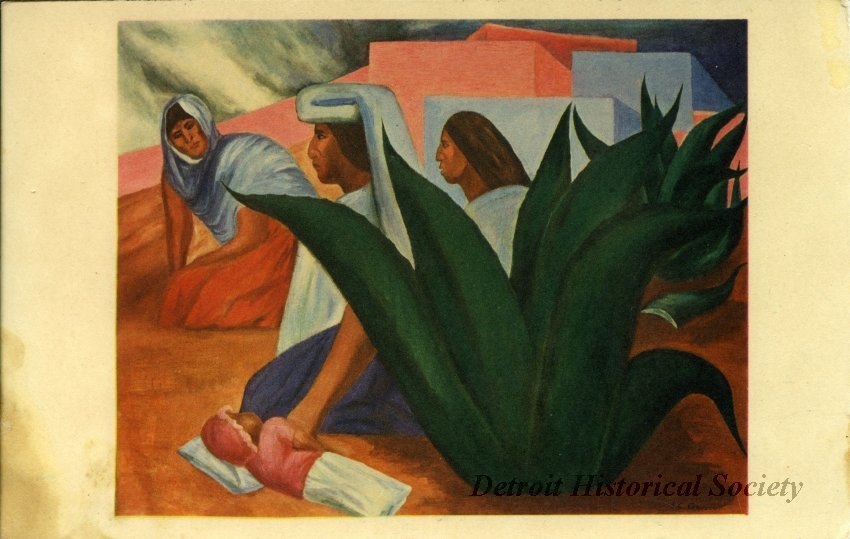
Possible research questions:
Who was Jose Clemente Orozco?
What role did Orozco play in the history of modern mural painting?
Year: 1932 (year of the painting)
Source: Detroit Institute of Arts Collection, Detroit Historical Society: https://detroithistorical.pastperfectonline.com/archive/B2FDD72E-9A72-4B0A-A5F1-899342487240
Note: The DIA's page for this work of art can be found here: https://dia.org/collection/mexican-pueblo-56083
Jose Barbosa in a University of Michigan medical class album
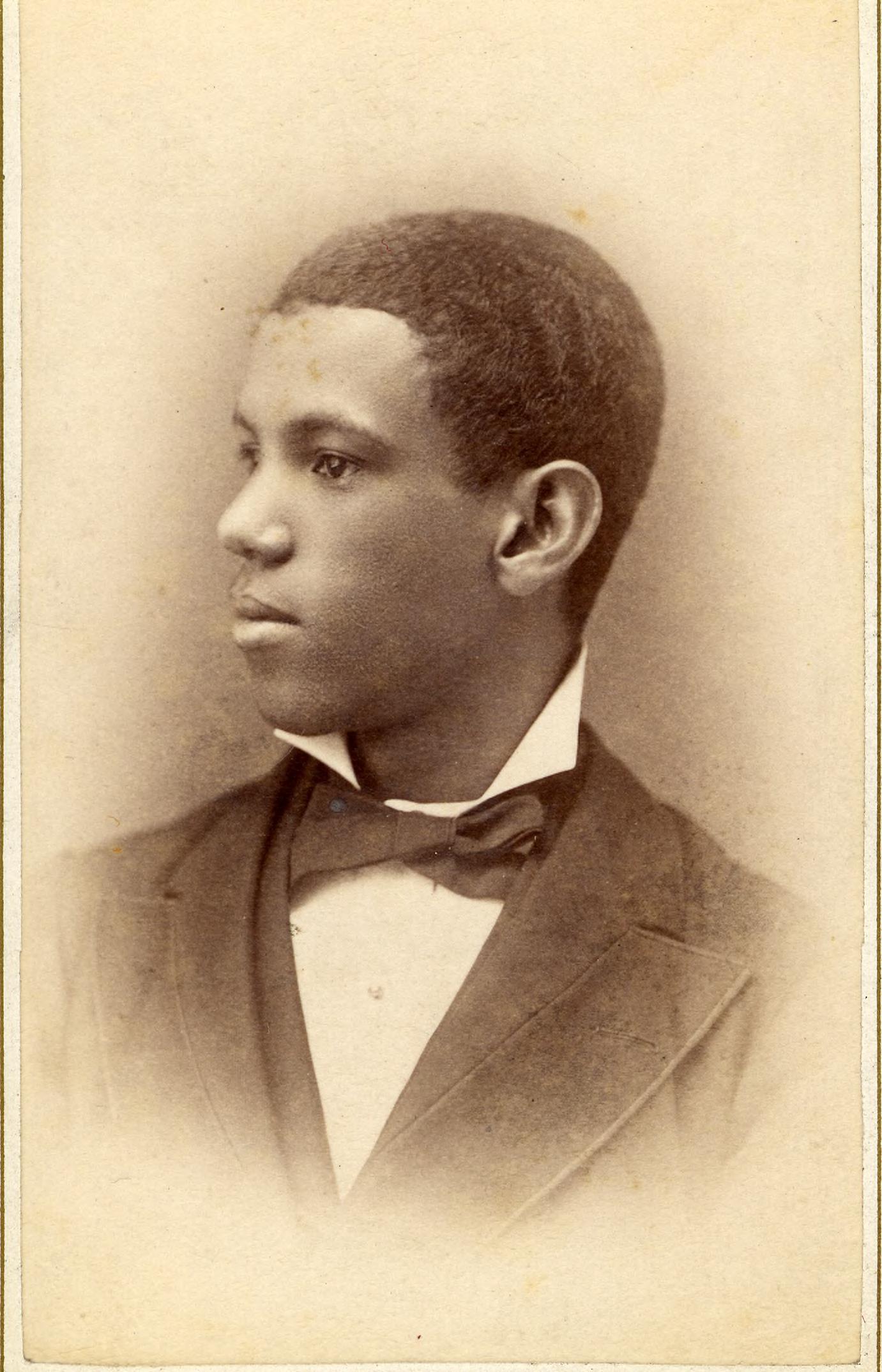
Description: Jose Barbosa was one of the first Black graduates of the University of Michigan Medical School and a founder of the Puerto Rican Republican Party, known as the "father of Puerto Rican statehood."
Possible research questions:
How did Jose Barbosa become the first Puerto Rican student at the University of Michigan?
How did his connections help him become a well-known political leader in Puerto Rico and an advocate for Puerto Rican statehood?
Year: 1880
Source: Anonymous University of Michigan photograph album, Bentley Historical Library Image Bank, Bentley Historical Library, University of Michigan: https://quod.lib.umich.edu/b/bhl/x-hs3021/hs3021
Cesar Chavez talking to students at Grand Valley State University
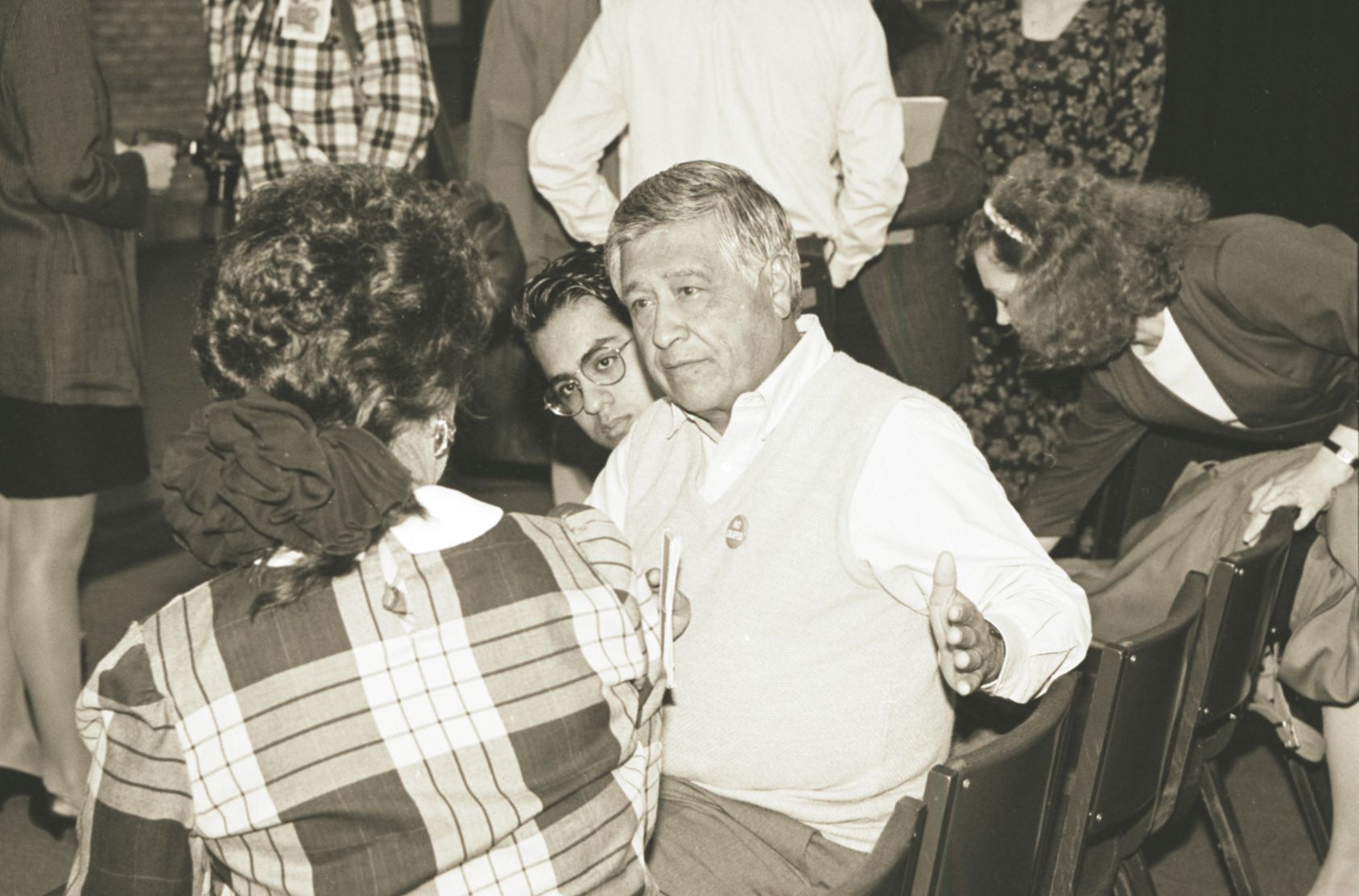
Possible research questions:
Who is Cesar Chavez?
How can you find out more about his beliefs?
Why would a union leader visit a college campus?
Year: 1993
Source: University photographs, GV01-01, Grand Valley State University Photographs, Special Collections and University Archives, Grand Valley State University Libraries: https://digitalcollections.library.gvsu.edu/document/4050
Housing for Mexican sugar beet workers at Saginaw Farms
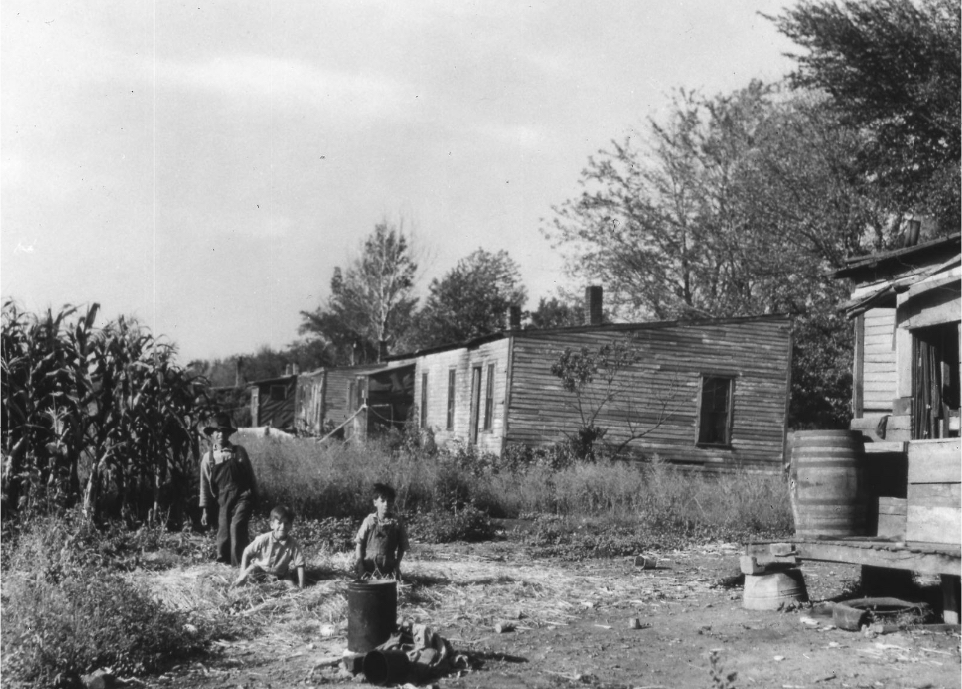
Possible research questions:
What are some of the challenges Mexican sugar beet workers likely faced in the 1940s?
Do you think Mexican workers still work in the sugar beet industry today? Why or why not? How could you find out?
Year: 1941
Source: Art, Architecture, and Engineering Library Lantern Slide Collection, University of Michigan Digital Collections, University of Michigan Library: https://quod.lib.umich.edu/u/ummu2ic/x-ls004205/ls004205
Note: Photographed by John Vachon of Saginaw County. Image owned by the Library of Congress.
Raymond Lozano, director of LA SED
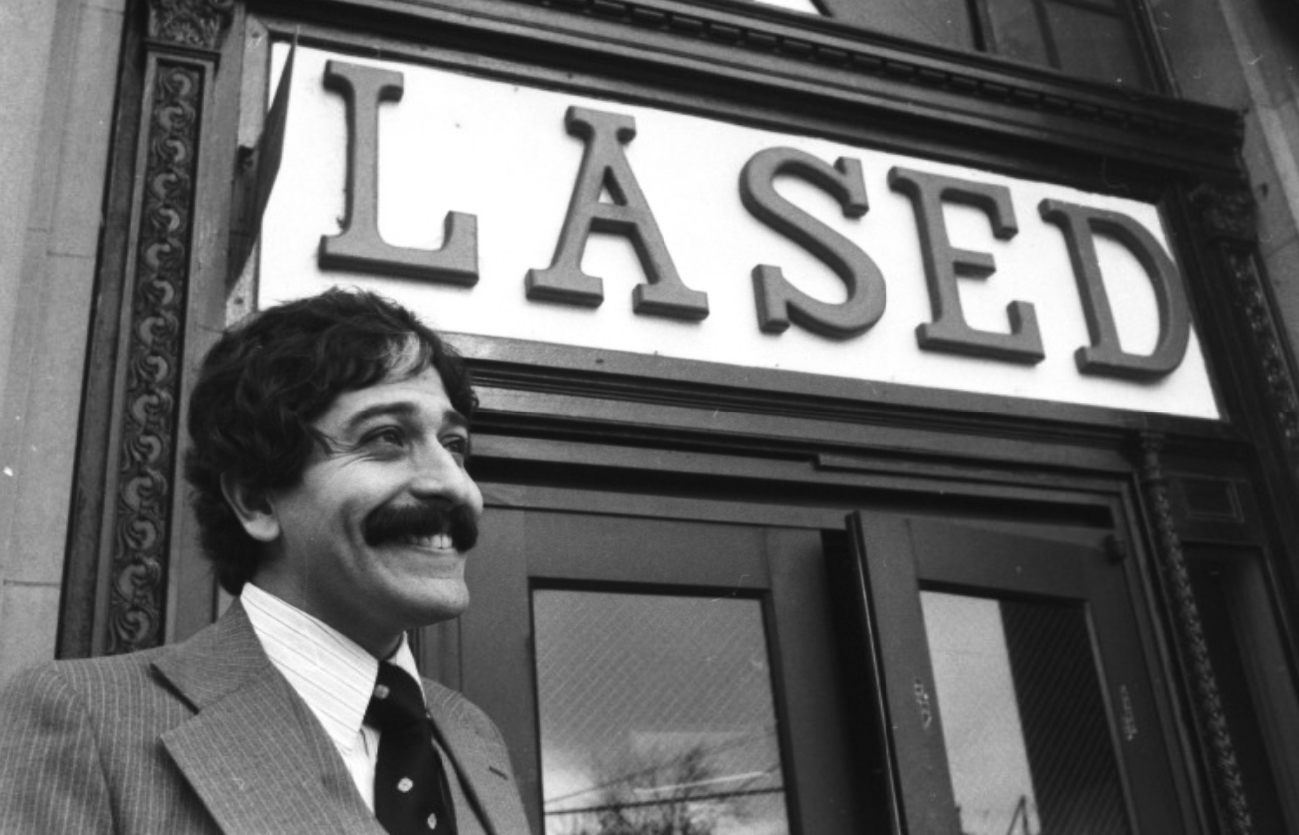
Note: LA SED is a Hispanic community organization in Detroit.
Possible research questions:
What are Raymond Lozano and LA SED doing now?
How long has there been a Hispanic community organization in Detroit?
Year: 1979
Source: The Detroit News Photograph Collection, The Virtual Motor City Collection at the Walter P. Reuther Library, Archives of Labor and Urban Affairs, Wayne State University: https://wayne.contentdm.oclc.org/digital/collection/vmc/id/40029/rec/1
Street view in Mexicantown neighborhood in Detroit
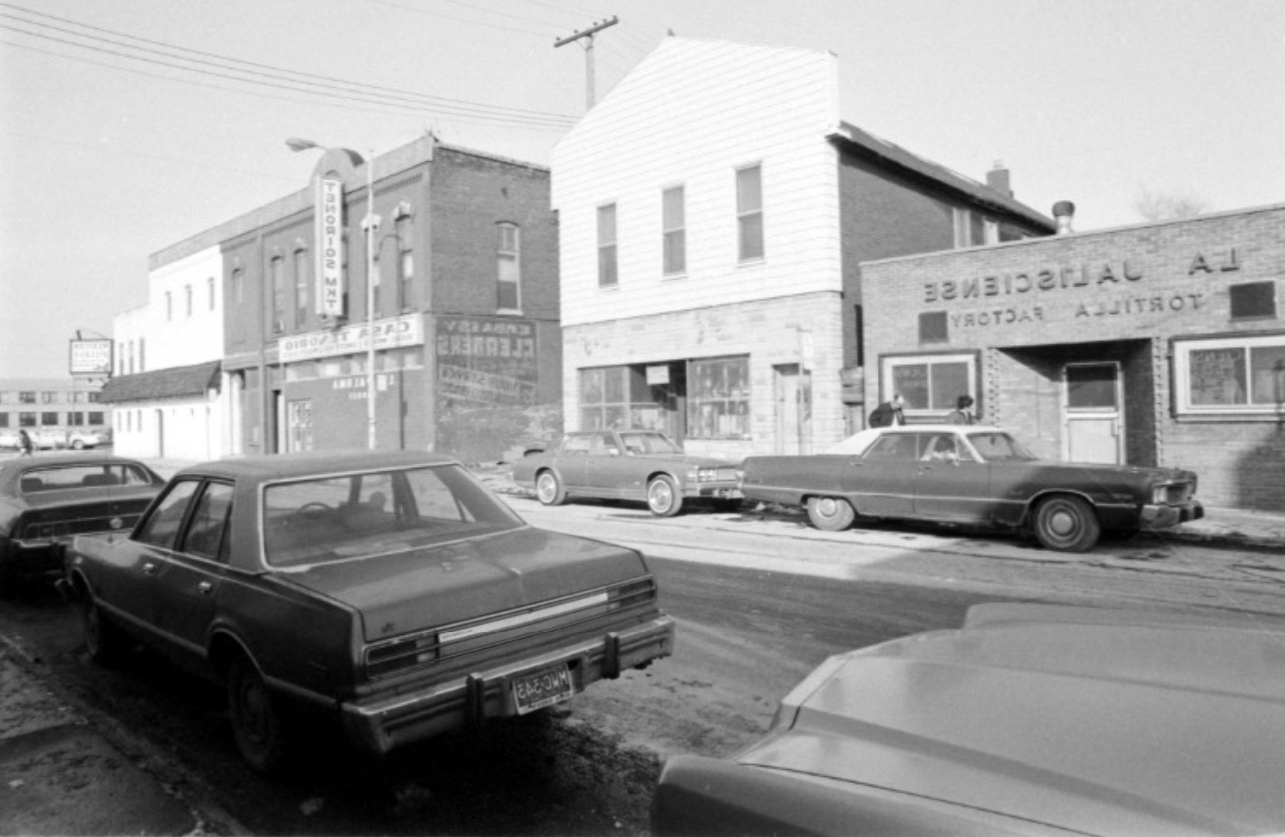
Possible research questions:
Where is Mexicantown, and when did the neighborhood first get that name?
Why might a group of people in a large American city live together in the same neighborhood?
Year: 1979
Source: The Detroit News Photograph Collection, The Virtual Motor City Collection at the Walter P. Reuther Library, Archives of Labor and Urban Affairs, Wayne State University: https://wayne.contentdm.oclc.org/digital/collection/vmc/id/14110/rec/1
Did you notice something strange about the photo above?
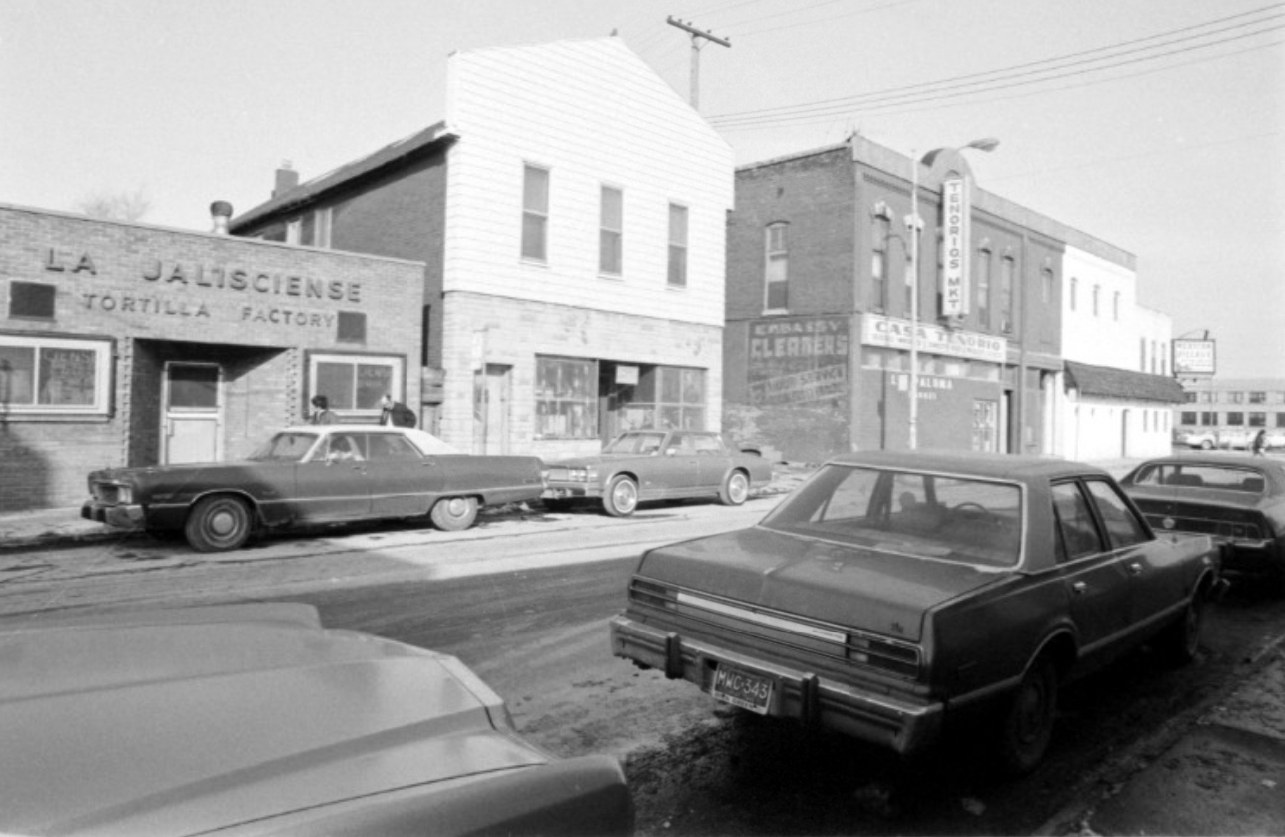
It was backwards! This can happen for lots of reasons. Since analog photos are printed by shining light through film negatives, they sometimes get scanned or printed backwards. This may have happened at the archive or even with the original photographer, especially if this was a test print that was made for speed rather than quality. You might not know exactly why this happened, but you can still find clues in the image, even if it's accidentally flipped.
Fortunately, this photo includes signs on buildings, so the letters of the signs can tell us which way the photograph should go. Otherwise, the only way you might know is if you've been to the neighborhood yourself.
We thought this was a good reminder that whenever you use a record you should look at it closely to make sure it really shows what you think it does. Studying history often means having to think like a detective!
